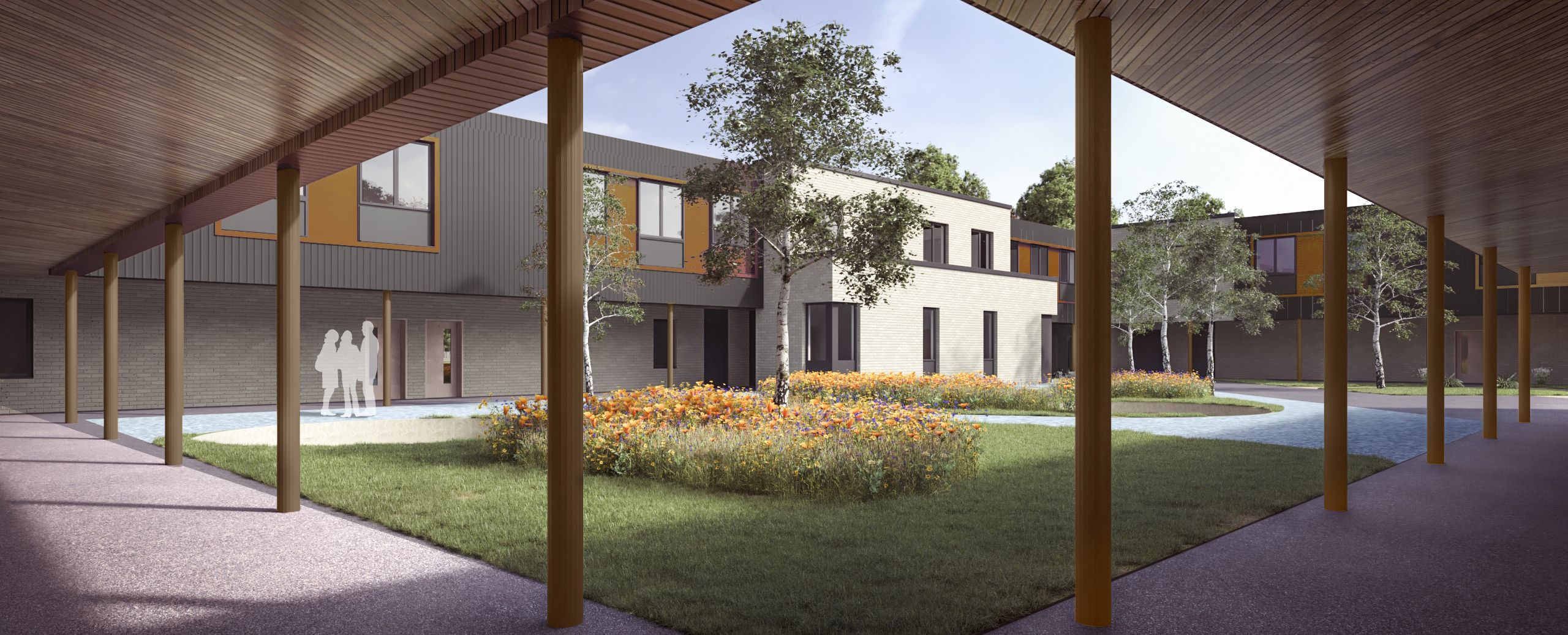Daylight Design for Schools
Since 2014, the Department for Education (DfE) has required Climate-Based Daylight Modelling (CBDM) for all new school buildings in England, as part of the Priority School Building Programme (PSBP) and School Rebuilding Programme (SRP).
This approach replaces traditional Daylight Factor (DF%) assessments under overcast sky conditions, providing a more realistic, year-round analysis of daylight performance based on actual weather data.
Two key metrics are used to assess daylight performance in schools:
Spatial Daylight Autonomy - sDA(300/50%)
- The Spatial Daylight Autonomy (sDA) should be 50% or greater across at least 50% of the working plane during occupied hours. The target illuminance (typ. 300lux) should be achieved for more than 50% of the time throughout a typical year during occupied hours (8.30 am to 4.00 pm) across at least 50% of the working plane
Useful Daylight Illuminance - UDI-a (100~3000lux)
- The UDI-a (100-3000lux) should be >80% (ave) across the working plane during occupied hours. The level of illuminance provided below 100 Lux (UDI-s) and above 3000 Lux (UDI-e) should occur no more than 20% of the time (ave).
Services
Lighting Analysts are pioneers in the use of Climate-Based Daylight Modelling (CBDM), with over 20 years of experience in daylight simulation and analysis.
We have worked on over 150 school developments across England, supporting architects and contractors as part of the government's (DfE / ESFA / EFA) frameworks.
Our streamlined processes enable us to work directly from architectural 3D Revit models, providing in-depth, whole-building daylight analysis to meet DfE requirements.
-
Daylight design & optimisation
-
CBDM design, analysis & compliance reports
-
Design advice to optimise daylight performance
-
Glare control strategies and assessment
-
Full support for DfE project teams
CBDM Compliance
In November 2021, the Department for Education (DfE) issued a revised Generic Design Brief (GDB).
Importantly, the Annex 2E daylight requirements remained unchanged from the 2019 edition, with the same sDA and UDI-a targets applying.
Type L1 - Basic teaching
- 80% of L1 spaces are required to achieve both the 50% sDA (300/50%) and 80% UDI-a (100~3000lux) targets.
Type L2 - Hall Dining PE & Libraries
- 65% of L2 spaces are required to achieve the 80% UDI-a (100-3000lux) target.
Type L3 - Group, study areas & staff rooms
- 50% of L3 spaces are required to achieve the 80% UDI-a (100-3000lux) target.
In May 2019, the Department for Education (DfE) issued a revised Generic Design Brief (GDB), introducing a minor change to the daylight compliance requirements outlined in Technical Annex 2E.
The targets for Type L1 spaces remained unchanged, while the compliance thresholds for L2 and L3 spaces were relaxed.
Type L1 - Basic teaching
- 80% of L1 spaces are required to achieve both the 50% sDA (300/50%) and 80% UDI-a (100~3000lux) targets.
Type L2 - Hall Dining PE & Libraries
- 65% of L2 spaces are required to achieve the 80% UDI-a (100-3000lux) target.
Type L3 - Group, study areas & staff rooms
- 50% of L3 spaces are required to achieve the 80% UDI-a (100-3000lux) target.
The 2017 Generic Design Brief (GDB), issued by the Education & Skills Funding Agency (ESFA) for the Priority School Building Programme 2 (PSBP2), introduced updated daylight requirements for schools.
The GDB defines six space types (L1–L6), with L1 to L3 spaces requiring analysis using Climate-Based Daylight Modelling (CBDM).
Type L1 - Basic teaching
- 80% of L1 spaces are required to achieve both the 50% sDA (300/50%) and 80% UDI-a (100~3000lux) targets.
Type L2 - Hall Dining PE & Libraries
- 75% of L2 spaces are required to achieve the 80% UDI-a (100-3000lux) target.
Type L3 - Group rooms study areas & staff rooms
- 60% of L3 spaces are required to achieve the 80% UDI-a (100-3000lux) target.
In 2014, the Education Funding Agency (EFA) introduced a new approach to daylight design and analysis for schools under the Priority School Building Programme (PSBP).
The requirements were set out in the EFA Daylight Design Guide Rev 2 (2014) and the Facilities Output Specification (FOS).
This marked the first formal introduction of Climate-Based Daylight Modelling (CBDM) for assessing daylight performance in new school buildings, moving beyond traditional Daylight Factor assessments.
Teaching & Learning Spaces
- 80% of the Teaching & Learning Spaces, within new build projects, must meet the minimum targets of 50% for Spatial Daylight Autonomy sDA (300/50%) and 80% for Useful Daylight Illuminance UDI-a (100-3000lux).
